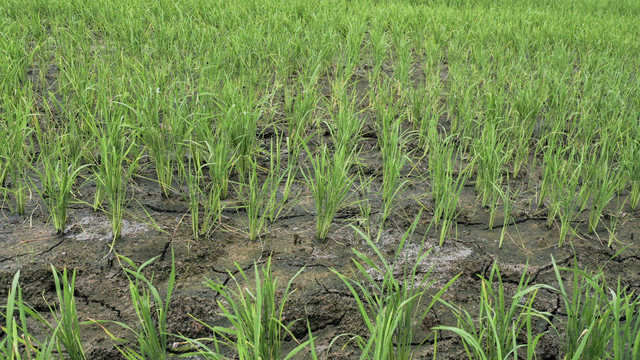
To prepare for projected temperature increases, the Department of Agriculture-Philippine Rice Research Institute (PhilRice) is urging farmers to test the adaptability of rice varieties that can withstand high temperatures in their locality.
Career scientist Norvie L. Manigbas pointed out that data spanning 50 years suggests a temperature increase of 1-2℃ in the future, highlighting the need to utilize NSIC Rc 600 and 602 to the fullest as these varieties can endure temperatures up to 38℃.
“The country’s first high-temperature-tolerant rice seeds, NSIC Rc 600 and 602, display exceptional traits crucial for resilience in high-temperature conditions. These can withstand temperatures up to 37℃ and even up to 38℃ in controlled environments like glasshouses,” he said.
NSIC Rc 600, under heat stress, yields 6.3t/ha and in normal conditions, it yields between 6.5-7t/ha. It matures in 110 days and exhibits resistance to both deadheart and whitehead. On the other hand, NSIC Rc 602 yields 6.2t/ha, matures in 109 days, and shows resistance to whitehead. These varieties demonstrate intermediate resistance to blast, bacterial leaf blight, sheath blight, brown planthopper, and green leafhopper.
Farmers interested in testing the varieties can inquire and access them through PhilRice.
Manigbas explained that heat stress during the vegetative phase can cause leaf discoloration and accelerated growth, potentially reducing the yield potential of heat-sensitive rice varieties.
“Temperatures exceeding 35°C during the reproductive stage can lead to yield reductions starting at 14%, escalating to 14-20% as temperatures rise further,” he said.
To increase adoption of these varieties, Manigbas advocates for intensified promotion and deployment of these varieties.
With the challenges of climate change, Manigbas said that PhilRice, with the backing of the Institute for Agro-Environmental Sciences of the National Agriculture and Food Research Organization in Tsukuba, Japan, is continuously developing rice varieties that can tolerate high temperatures.
Currently, PhilRice is testing more breeding materials for high-temperature tolerance. The flowering stage of these materials is planned between April 15 and May 15, a period typically experiencing the highest temperatures during the dry season based on 15 years of weather data.
“The development of high-temperature-tolerant seed varieties is a meticulous process involving years of breeding and testing. Researchers evaluate various characteristics, including grain filling, fertility, and resistance to pests and diseases, to ensure the viability and effectiveness of the selected varieties,” he said.
Varieties including NSIC Rc 600, NSIC Rc 480, and IR 64 are being studied in flooded and controlled irrigation using the Micrometeorological Instrument for Near-Canopy Environment of Rice (MINCER), which records temperature and humidity data every two minutes and calculates the heat index once flowering begins.
“We have advanced materials in observational nursery trials, some nominated for national cooperative tests in high-temperature ecosystems. We aim to acquire new varieties within two years, but for now, let’s encourage more farmers to adopt NSIC Rc 600 and 602 in areas with high temperatures,” Manigbas said.




